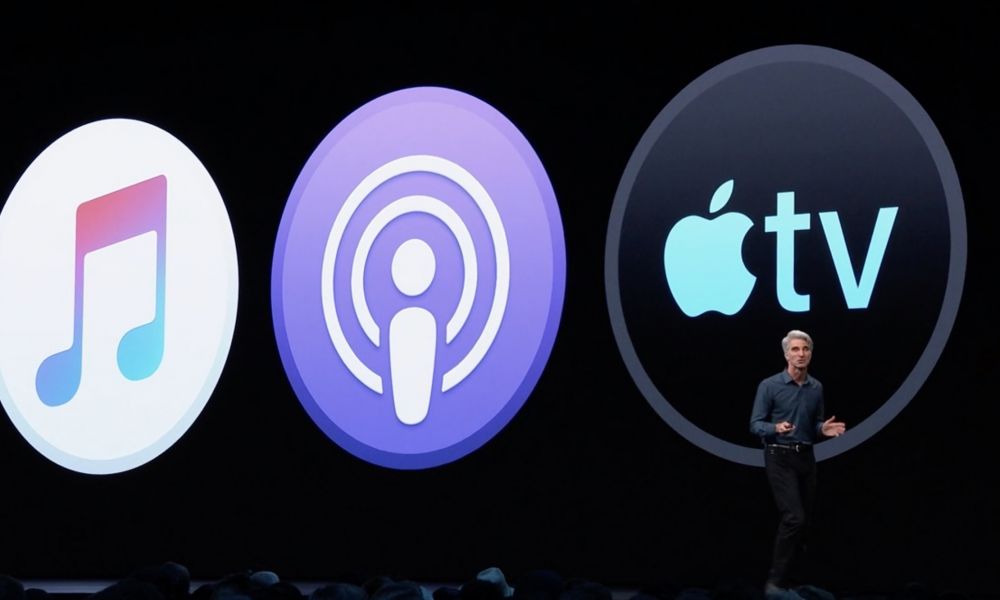The Spirit of iTunes Lives On in Apple’s New macOS Music App

Toggle Dark Mode
The recent rumours of iTunes demise have been greatly exaggerated. Although Apple will definitely retire iTunes as we know it in macOS 10.15 in favour of a new standalone Music app, in many ways this is going to be a change in name only — and it’s also only going to affect Mac users.
While there’s no doubt that iTunes is being broken up on the Mac — Apple’s new macOS 10.15 Catalina includes the expected collection of Music, TV, Podcasts, and Books apps, each handling their own respective pieces of what was formerly all rolled into the single iTunes app — the bulk of iTunes’ most important features, which were always focused primarily on music to begin with, are still there in the new Music app.
In fact, the new Music app largely feels like little more than a renamed and redesigned version of iTunes with all of the extra cruft stripped out; videos, audiobooks, and podcasts get their own separate apps, and even iOS device management has been moved over to the macOS Finder. For the first time since 2004, Apple has returned iTunes to its roots, making it all about the music again, but it’s ultimately still just the music version of iTunes, with a more appropriate name. Let’s face it, Apple hasn’t even really changed the app’s icon.
Your Music Library
Apple’s Catalina Music app will still support your iTunes Music library, migrating the whole thing into the new app’s format while retaining all of your own music, your playlists, and your custom tagging. Contrary to what many feared, this isn’t just going to be a front-end for Apple Music, but will still offer all of the same music features that iTunes has for years, including importing your own MP3 files from anywhere, tagging your own tracks, building smart playlists, and even ripping your own CDs. Even Apple’s Genius Mixes feature has made the transition into to the new app.
Although it’s less prominent than it was in iTunes, the new Music app also still supports the iTunes Store, so those who prefer to own their music rather than renting it will still have all of the same options, whether it’s buying CDs or purchasing digital downloads from iTunes or elsewhere, and iCloud Music Library isn’t going away either — all of your own music will still be synced to the cloud if you’re paying for Apple Music or iTunes Match, the latter of which doesn’t appear to be going away or even getting a name change (yet).
Syncing
One thing that did surprise us was Apple’s determination to really make the new Music app focus only on the music. While we had heard that macOS Catalina would continue to allow users to sync their iOS devices and legacy iPods, we had sort of assumed that this would still be part of the new Music app.
However, it turns out that Apple has moved this feature into a fifth column, integrating it into the macOS Finder instead. Your iPhone, iPad, or iPod will now appear in the Finder sidebar in macOS Catalina just like any other external drive, although clicking on it will present the same sync management interface that was once found in iTunes. Apple also hasn’t cut any corners here — there’s full support for syncing even legacy iPods.
Moving this all to Finder actually makes a lot of sense; it’s already the place where external storage devices are managed, and of course even older iPods can handle things like movies and TV shows, so there’s really no appropriate place for this in any of the media-specific apps.
iTunes for Windows
As we predicted, all of these changes affect only Mac users. Much to the chagrin of Windows users, iTunes is going to live on for that platform, continuing to be updated as necessary. This won’t be welcome news for those on PCs, however, as iTunes for Windows has long been considered an even more bloated and ugly mess than its Mac counterpart.
However, the move isn’t at all surprising. While Apple actually began the breakup of iTunes on the Mac back in 2013 when it released a separate iBooks app, it didn’t follow suit with iTunes for Windows, and even today Windows users still sync and manage their Apple Books in iTunes. Further, while in macOS Apple can bundle all of its apps with the operating system so that they’re preinstalled and readily available, breaking up iTunes on Windows would make the installation and setup process more complicated, plus it would be especially challenging for Apple to integrate iOS and iPod device management with Windows Explorer in the same way it has with Finder. As disappointing as it may be, a single iTunes app still makes a lot of sense for Windows users.
What’s less clear is whether Apple will be taking any additional steps to help encourage Windows users to subscribe to Apple TV+; Apple has offered no insight into whether it’s new streaming service will even be available via iTunes itself, much less whether it may still release a TV app of some kind for the Windows platform. With Apple eagerly embracing competitors’ smart TVs and set-top boxes for its new video streaming service, it seems odd that it would be willing to leave Windows users out in the cold, however it’s also possible that there may be content security issues that it wants to address before it’s ready to welcome the Windows platform to the family.






